This month Tanya Weaver delves into the world of drones to discover the latest innovations currently in flight
Take flight
Young Dutch company Aerialtronics is trying to find a niche for itself in the flooded drone market.
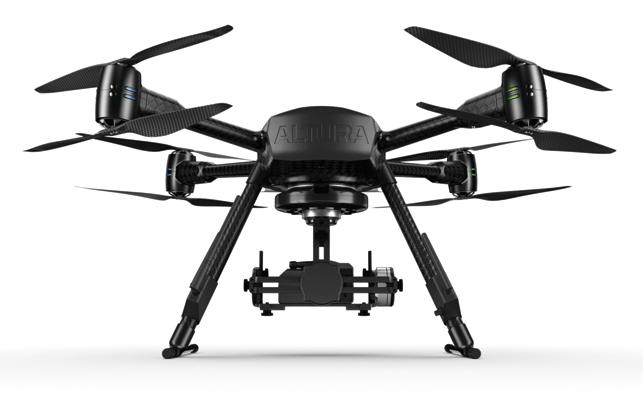
“Our aim is to deliver a carefree flying platform with variable different payload options to assist our customer during their job. For instance, the police may want a drone with infrared video capability, while farmers would rather fly with a multi-spectral camera to monitor their crops,” explains Joost Hezemans, Aerialtronics’ head of design.
Its unmanned aircraft systems are created inhouse, including the hardware and software, and then assembled and tested before delivering to the client.
Aerialtronics’ core product is the Altura, the most recent of which is the Altura Zenith. Using SolidWorks in the design, the aim was to combine state-of-the-art technology with a compact and lightweight structure.
The monocoque carbon airframe, which weighs just 450g, was designed to enclose a number of components including a 16.000 mAH battery, which allows for 45 minutes of flight time operated remotely using a tablet and RF joystick.
During the development process, 3D printing played a vital role. The company used its Stratasys uPrint SE Plus 3D printer to produce prototypes in ABS materials.
As Hezemans explains, 3D printing played three key roles. Firstly, in its partnership with the carbon composites manufacturer. “There is a lot that needs to be squeezed inside the system so we printed prototypes to show the carbon manufacturer what we wanted.”
Secondly, Aerialtronics used 3D printing models in the assembly to help solve any problems before going into production.
And thirdly, in the real-life testing of the carbon fibre frames where the various motor and propeller components were tested.
The Aerialtronics in-house research team spent 6,500 hours developing and optimising the propulsion system. Four or eight brushless motors are combined with 16-inch propellers, which exert over 16kg of vertical thrust.
“We needed to test different motor and propeller combinations with the speed controller, which meant that we had to design a lot of motor mounts to attach to the drone to see which motor and propeller combinations would work best,” says Hezemans.
“To injection mould each one would have been expensive and time consuming but now with 3D printing we can print 30 different motor mounts in a very short amount of time, attach them and test straight away.”
Ready to fly
3D Robotics has been in the drone game for quite some time earning the reputation as North America’s largest personal drone company.
Founded in 2009, this California-based start-up now employs over 200 people and has over 30,000 customers worldwide.
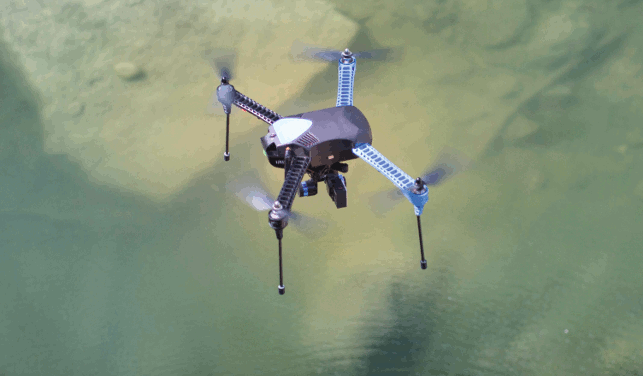
With its most recent personal drone product IRIS+, which includes a mounted GoPro camera and is operated via a remote control or smart device, the aim was to provide everything inside the box that the user would need to fly.
During the development process, Autodesk Inventor was used to model the product with the designer, Jason Short, using Adobe Flash to carry out tests whilst writing all of the flight code. “I ran a complete simulation of the vehicle and had a suite of tools I used to examine the performance,” he explains.
Two key features of the design include Follow Me mode, which enables the drone to easily follow and film the user whilst they’re carrying any GPS-enabled Android device, and DroidPlanner 2 software, allowing users to plan flights by simply drawing a flight path on an Android device.
“As all 3D Robotics software is free and open source, designed and supported by the world’s first and largest open community of drone developers, your flight software will never go obsolete, but will only improve – and you get all these updates for free,” adds Short..
Airborne sidekick
There are drones for all different customers and applications.
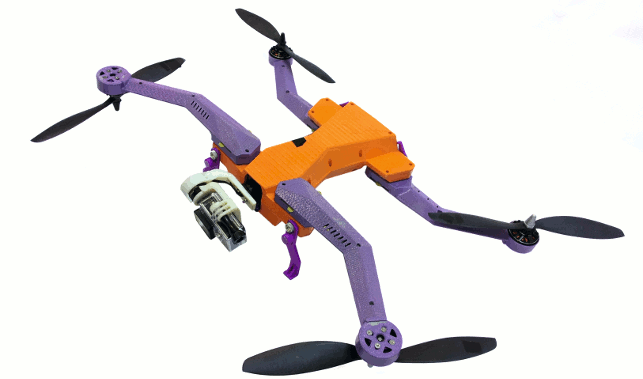
The Airdog is for the sort of customer that is into action sports – wake-boarding, surfing, snowboarding, BMXing etc. – and wants a camera to video them in action. This would usually involve someone following them with camera… until now.
The Airdog drone, which accommodates a goPro sports camera with gyroscope stabilised gimbal, automatically follows and captures the user’s every movement via a wrist-worn tracking device called AirLeash.
The AirDog team, based out of Helico Aerospace Industries headquartered in Delaware in the US, refer to themselves as a group of innovators passionate about action sports who struck on the idea of the AirDog in mid 2013.
“It took a year and countless caffeinefueled hours, that were spent hacking intelligent flight code algorithms. The result is extremely intelligent simple to use drone technology for every action sports enthusiast and movie maker out there,” says Edgars Rozentals, CEO and founder.
During the prototyping phase, 3D printing played a vital role in producing fullyfunctional parts for this foldable product.
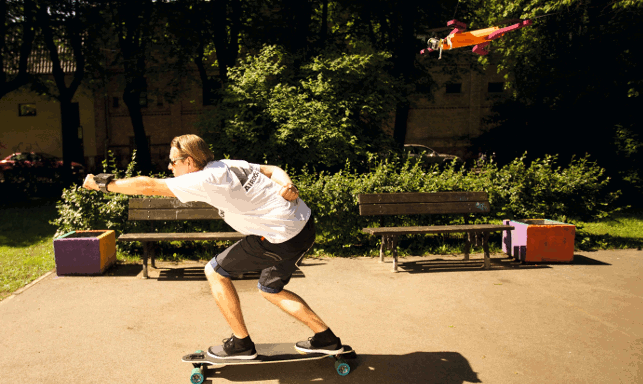
The drone itself was produced using Stratasys’ FDM-based ULTEM material, chosen for its high strength and lightweight characteristics. Whilst, Stratasys’ PolyJet multi-material 3D printing technology was used to produce the AirLeash, which combines rigid and rubber-like materials.
This prototype was used to launch AirDog’s Kickstarter campaign in June 2014. Having received funding of $1,368,177 goal, the AirDog is in full production with the first products to be delivered to customers in November 2014.
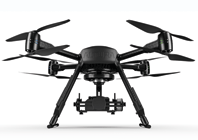
We discover the latest innovations currently in flight
Default






